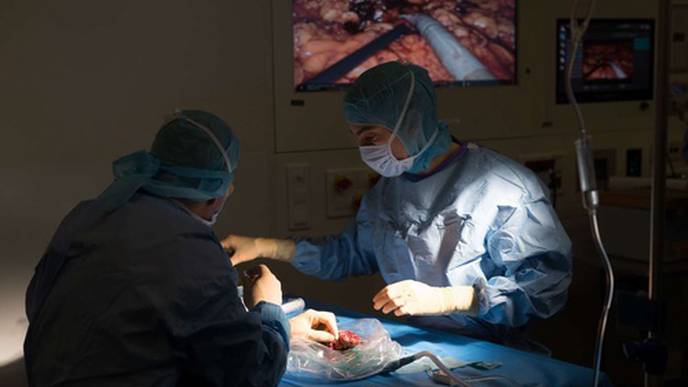What does the study of satellites have to do with diagnosing kidney transplant rejection? – Data science. Daniel Yoo, who until 2018, worked as a data scientist on machine learning in satellite positioning for the South Korean Air Force, is the first signatory among the scientists who contributed to a study published May 4 in Nature Medicine on a computerized diagnostic tool that corrects graft rejection diagnoses following a kidney transplant.
The tool, which has been tested on 4,409 biopsies taken from 3,054 transplant patients who are being followed in 20 transplant reference centers in Europe and North America, showed that nearly 45% of the rejection diagnoses made by physicians were incorrect, or "imperfect diagnoses with regard to the criteria of international classification," said the Professor of Nephrology and Epidemiology Alexandre Loupy (Inserm, Université Paris Cité, AP-HP), whose team, including Daniel Yoo, worked on the project for five years .
The Necker Hospital practitioner assembled an international consortium of experts in transplantation, nephrology, anatomical pathology, data science, epidemiology and artificial intelligence with the aim of finding a tool to ensure accuracy in rejection diagnoses. Named after the Canadian city where it was established in 1991, during a physician's congress, the Banff International Classification is a reference, which following a kidney biopsy and other analysis results, allows the diagnosis of graft rejection. And also to adapt the patient's immunosuppressive (anti-rejection) treatment.
"Over the last 20 years, as knowledge about kidney disease and graft rejection has progressed, we have discovered that it is much more complex than we thought," Loupy said. Rejection is caused by various factors, even though they are based on the general principle of an immune system focused on eliminating a foreign body. The tool has become more complex, as classification has been improved by adding criteria to refine the diagnosis. "However, the quality of diagnosis, the cornerstone of our profession, enables us to give the right treatment, at the right time, to the right person," said the nephrologist.
Develop a companion tool
The first four years of work were spent feeding the algorithm with data and developing a companion tool. The fifth year was spent testing it in a prospective study in which physicians did not know that their diagnoses would be compared to that of a machine. But the number of inaccurate diagnoses still came as a surprise to the team," said Loupy. "And it's across the board, with scenarios of patients, who have been wrongly diagnosed as 'rejection,' undergoing unnecessary and heavy immunosuppressive treatments that have known consequences in terms of infectious diseases and cancers; or of patients diagnosed as 'non-rejection' when they were genuine rejections and did not benefit from a treatment that ensures a good survival rate after a graft."
You have 44.21% of this article left to read. The rest is for subscribers only.


Facebook Comments